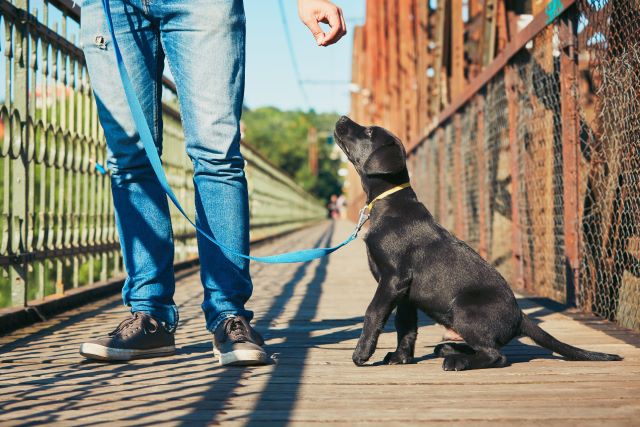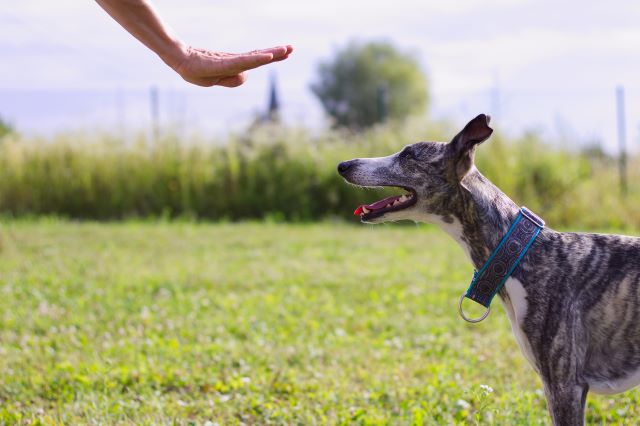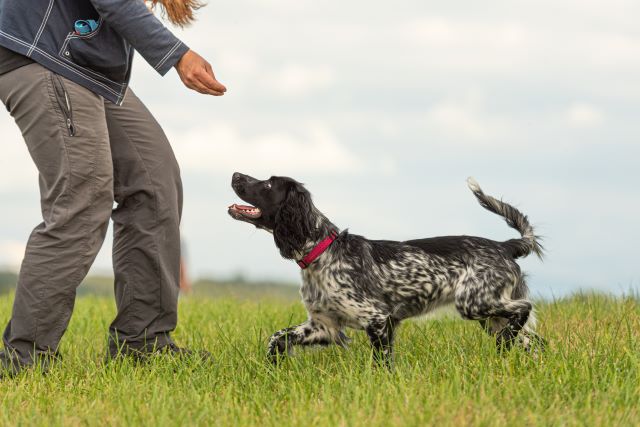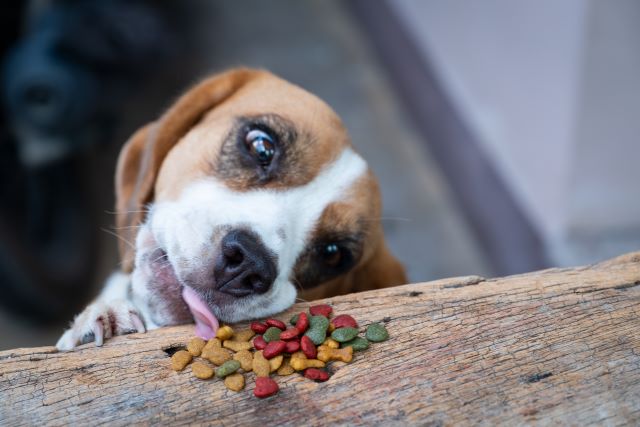iHeartDogs is reader-supported. When you buy via links on our site, we may earn an affiliate commission at no extra cost to you.
Not every dog needs to know advanced training like jumping over hurdles or balancing treats on their nose. However, basic training is essential for every dog, no matter the age and breed. Proper training can help you have better control over your dog while also forming a closer bond between the two of you. Yet, with so many different training lessons out there, it can be tricky to know where to start. The following are behaviors that every dog should learn during training, along with some professional training recommendations.
Remember that not all dog trainers use the same methods for teaching this command, so if one method isn’t working for you, a different approach may be beneficial. However, make sure you’re focusing on positive reinforcement training instead of punishment-based training for best results. While punishments may seem effective in some cases, they cause dogs to become fearful of their humans instead of building trust.

Behaviors/Commands That Every Dog Should Know
1. Sit
“Sit” is a basic command that’s typically taught to dogs before anything else. It might seem like a silly little trick, but it’s beneficial because it gets your dog in a position where they’re focused and less likely to cause trouble. If they’re sitting, their eyes are on you and they’re not jumping around. It’s a great starting point for leading into other commands. Another good command to pair with this is “touch,” where you get your dog to touch their nose to your hand. “Touch” keeps your dog’s focus on you and away from distractions.
When teaching a dog “sit” for the first time, you can hold a treat in front of their nose and then gradually move it above and slightly behind their head. This should cause your dog to place their butt on the ground when trying to look at the treat. Say “sit” during this process, and if your dog sits, reward them.
2. Leave it
This is one of the most important cues because it can keep your dog from getting into something dangerous. “Leave it” is typically used whenever your dog is about to pick up something they shouldn’t such as random items outside or dangerous human foods.
To start teaching this command, put some treats in the palm of your hand. If your dog goes for the treats, close your hand into a fist to prevent them from accessing the food. Once they stop going for the food without permission, you can move on to putting the treats on the floor and rewarding your dog when they successfully leave it.

3. Drop it
“Drop it” is just as important as leave it. It’s for when your dog either didn’t respond to leave it and now has the item in their mouth, or you did not catch them in time. Either way, getting your dog to drop something before swallowing it could save their life.
A great way to work on “drop it” is to start by getting them interested in one of their toys. After playing with the toy for a bit, get them to drop it by holding out a treat for them to take. Repeat these steps a few times before adding the cue.
4. Stay
Like the other commands, a rock-solid “stay” can save your dog’s life. If they’re about to run into a busy street or if they see the neighbor’s cat, telling them to stay put in your yard will be better for everyone involved. Using the “stay” command is another way to prevent dogs from running to pick up something they shouldn’t, like a table scrap falling on the floor.
When teaching “stay”, start with small distances at a time. For example, you can use the command and take a few steps back. Many owners hold out the palm of their hand while saying the cue. Then, wait a few seconds and reward your dog if they keep their distance. Keep increasing the number of steps you take as your dog gets the hang of it.

5. Watch Me
This important cue teaches your dog to focus on you, no matter what. It’s especially useful for dogs that are reactive or nervous, because it gives them a job to do and keeps them watching you rather than fixating on something they shouldn’t, such as a squirrel or another dog.
To teach “watch me,” start by having your dog sit. Then, hold a treat near their nose and slowly bring it up to your face. Reward your dog if their eyes are looking at you during the process. Once they get the hang of that, try it without the treat and reward your dog if they look at you on command.
6. Come
We all know why “come” is important. No one wants to lose their dog or have to chase them for an hour at the dog park. Your dog should run at you, not away from you, which using “come” should achieve.
Getting your dog to come to you can be easy if you’re holding their favorite toy or treat, so start with that. It’s best to practice having your dog come to you in a distraction-free environment first. Then, you can work your way up to trying the “come” command when there are distractions around, such as other people and dogs.

7. Heel
For dogs in an urban setting, a “close,” “with me,” or “heel” cue is beneficial for walking on sidewalks. It keeps them from tripping or being tripped by passing people, bikes, skateboarders, etc. Plus, it keeps them out of the way and focused on you.
To get your dog to “heel” or sit next to you, you can start by guiding your dog to that spot with a treat. Once your dog is sitting beside you, you can try walking forward one step at a time. For each step your dog follows, reward them. You may need to guide them with a treat a few times before they start to understand.
8. Off
The “off” cue (for when your dog jumps up on a person, couch, counter, etc.) is good to know even if your dog doesn’t jump much. If your dog ends up jumping toward a hot stove, a sharp knife, an elderly person, or a small child, that could create a disaster. Even the friendliest dogs can cause injuries by jumping up, so don’t encourage them to jump and use a command to prevent the behavior.
When your dog puts their paws up on something they shouldn’t, say the command and lure them off with a treat if needed. Then, reward them once their paws are back on the ground. For this to be successful, you’ll need to use the command every time your dog jumps up, so keep a close eye on your dog’s behaviors.

Need Help with Training?
Teaching your dog these behaviors requires a lot of patience and consistency. However, some dogs are more difficult to train than others, so if you’re having trouble doing it on your own, it’s time to reach out to a professional trainer. Trainers can give you personalized tips that will help set your dog up for success.
However, it can be difficult to find the time for dog training classes and they can often be pricey. So, many dog parents are opting for online dog training courses that allow them to take training classes at any time from the comfort of their home. If you run into any issues during an online training session, you can talk to an online trainer for help.
If online dog training sounds interesting to you, here are a few companies to consider:
Working with a dog trainer, whether online or in person, can help your dog understand new commands faster. While training, be patient and reward your dog whenever they do what they’re supposed to. Even when your dog has mastered the behaviors, keep working on training regularly for best results. Remember, training should be a fund bonding activity for you and your dog in addition to improving their behaviors.
 Toledo, United States.
Toledo, United States.